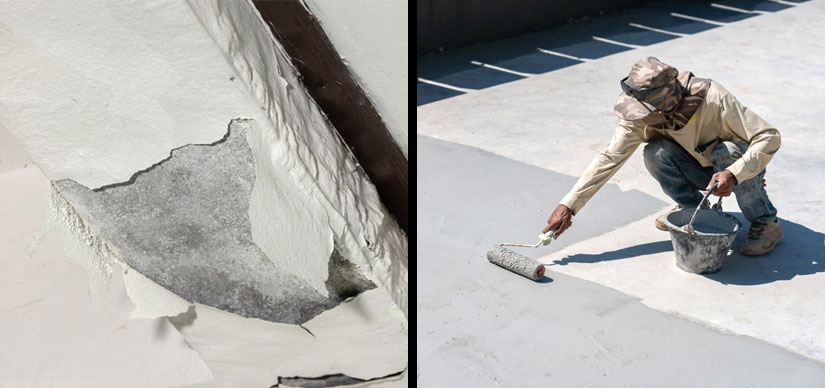List of Warning Signs of a Slab Leak and Useful Tips to Fix It
Regarding plumbing issues, slab leaks are among the most aggravating that a homeowner may experience. These leaks are particularly aggravating because a homeowner cannot fix them independently because they are difficult to access.
The indicators of a leak are also subtle, and they may have already done significant harm before it was discovered. However, as with anything that goes wrong with the property, it is in the homeowner’s best interest to have a leak-detecting plumber locate do slab leak repair in San Marcos as quickly as possible.
When a homeowner has an issue with a slab leak, they frequently get the impression that something is wrong with their property before they can even give the problem a name. To help you detect a slab leak repair in San Marcos, the professionals would like to share some recommendations with you:
Keep an eye on the Water Bill.
If you receive a water bill that is significantly higher than usual, even though you have not increased your water consumption, you may leak somewhere in your home. The Environmental Protection Agency estimates that a family of four will consume no more than 12,000 gallons of water per month, except for the summer months when watering a garden or lawn may likely increase this amount. For example, a constant trickle from a faucet might waste as much as 10,000 gallons of water over a year. As a result, keeping an eye on your water account is a prudent and preventative measure you can take.
Keep an eye on the water meter.
Monitoring the water meter in your home might provide you with a conclusive response if you have reason to suspect that there is a leak. The water meter is typically concealed by a cover resembling a maintenance hole and situated close to the street. However, in regions where the temperature rarely falls below freezing, you may find the meter either on the side or the back of the house. But it will be close to where the water supply line enters the structure.
Look for areas of the grass that are noticeably greener.
Everyone wants a thick, verdant lawn, but if you notice a section of your yard that is noticeably more emerald green (and grows more quickly) than the rest of the grass, it may point to the location of a broken, hidden water line. If the crack is vast, there may even be some puddles on the ground’s surface where the water has pooled. In such situations, you can contact the Professionals for Slab leak repairs in San Marcos.
Inspect the various appliances and fixtures.
If the water meter test shows a leak somewhere inside your home, check the cupboards under the sinks in the bathroom, the laundry room, and the kitchen to ensure they are dry. It would help if you also searched for puddles around the bases of bathtubs, commodes, and showers, as well as underneath the water heater, dishwasher, and washing machine. If you discover any puddles, you should Call a Plumber in San Marcos immediately and turn off the water supply valve for the appliance or fixture in question.
Perform a Dye Test on the Toilet.
Whether you don’t discover any puddles around the appliances or fixtures, you should check to see if the toilet needs to be repaired. It is one of the most likely places to have an inside leak. The toilet’s flapper is a rubber stopper that, until you flush the toilet, prevents water from entering the bowl. Over time, the flapper can become brittle, which allows water to leak from the tank into the bowl slowly.
Please take a few drops of food coloring and place them in the toilet tank in the home. You’ll need a bottle of food coloring for this. If the tank leaks, the color will develop in the toilet bowl within the first five minutes. If there is color in the bowl, you should call a plumber; but if you are skilled with do-it-yourself chores, you can likely change the flapper.
Maintain Constant Vigilance for Emerging Clues.
If a fitting on a supply line under your sink breaks and a shower of water start flying out, you will know quickly where the problem is, but some leaks are much stealthier than others! The worst case scenario is that water may be slowly dripping from pipe fittings hidden within a wall but go undetected until it has caused considerable damage. Even though the water meter test shows that there isn’t a leak in your home at the moment, a leak could spring up at any time in the future, so it’s essential to be on the lookout for it.
Detectors of leaks provide immediate notification of the problem.
Some plumbing fixtures and pipes are more likely to spring a leak than others. Owing to corrosion inside the tank, an older water heater may develop pinholes at the bottom of its tank, and during the winter, water pipes that lead to outside water faucets may freeze and burst due to the extreme cold. Therefore, it would be a good idea to put leak detectors in these places. You can switch off the water supply and address the leak before the water causes havoc in your home. But if you have a detector that is powered by a battery and emits a loud warning whenever it detects any amount of water, even a minimal amount.
A Quick Slab Leak Test
Do any of these indications apply to you but still need convincing? To prevent flooding, turn off all of the area’s faucets and other water sources. Check to see that not even the slightest trickle of water is coming. It could be from any of the pipes in your home. Go outside or to the room where your water meter is located and keep an eye on it. Stay still and monitor your meter for at least five to ten minutes. It is sensitive enough to detect even the tiniest amount of water consumption. Wait one minute if the arrow on the meter indicates that water is being used. A seemingly insignificant component, like the ice machine in your refrigerator, is working overtime. A leak exists in the system if the arrow still shows that water is being used after one minute has passed.
Also Read: Could It Be a Water Slab Leak? How to Tell and What to Do?
How to remedy a slab leak in your house?
The detection of the problem is the initial step in the process of repairing any slab leak. Please give slab leak repair San Marcos a call so we can verify that your slab is leaking. We will assist you in locating the location of your water line’s site and turn off the water supply. Because of this, the leak will no longer be able to do more damage. We can also assist you in reducing any water damage the leak may have caused. Mold can grow on wet carpets, drywall, or flooring quickly. Professionals for Slab leak repair in San Marcos can treat damaged areas if your slab leak also brings you mold.


